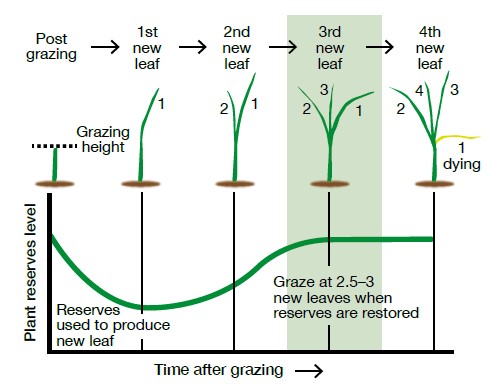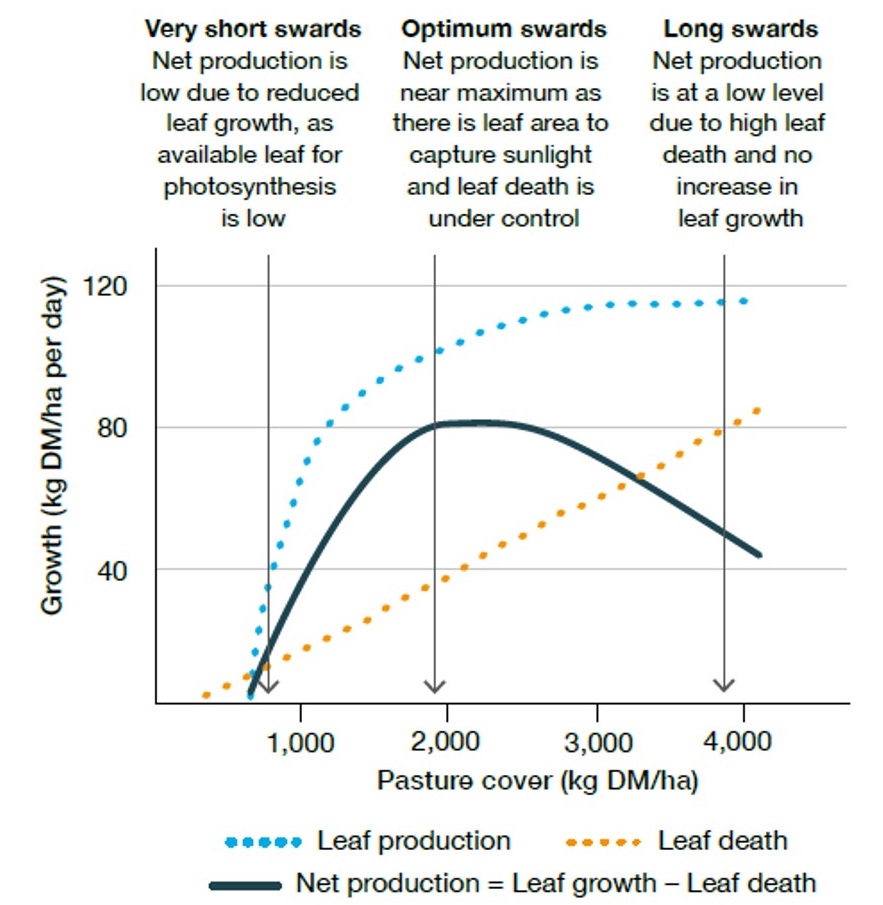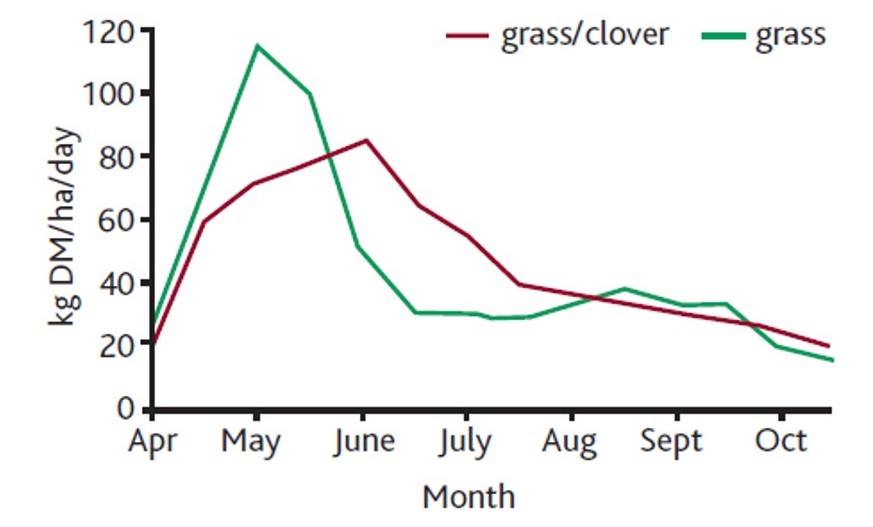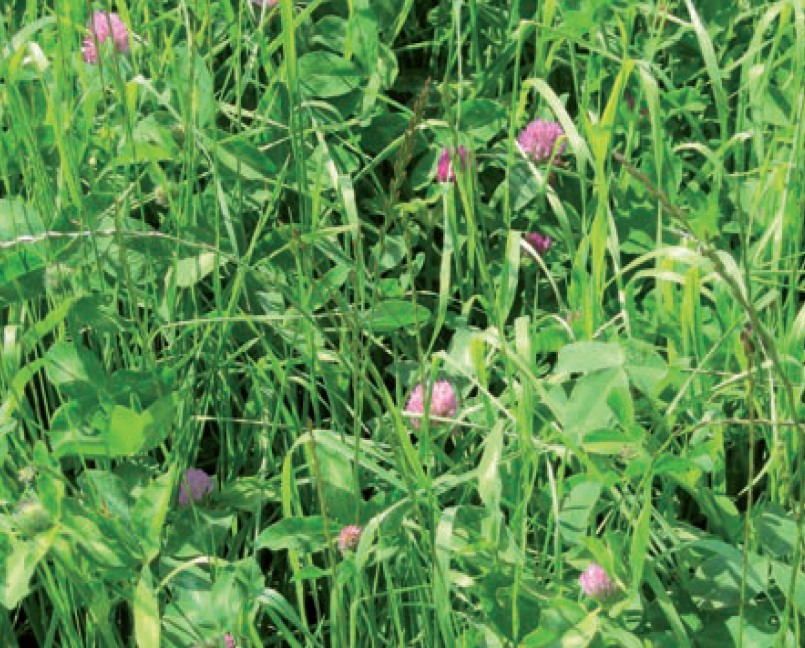- Home
- Knowledge library
- Understanding grass growth for beef rotational grazing
Understanding grass growth for beef rotational grazing
Welcome to the rotational grazing systems series for beef production. This section's focus is grass growth and sward quality.
Understanding how grass grows
Most grasses have growing points at or near ground level, which quickly respond to defoliation.
Perennial ryegrass, the UK’s most commonly sown species, has three live leaves on every individual plant (tiller); once the fourth leaf starts to grow, the first and oldest leaf dies. The aim of rotational grazing is to make the most of the grass that grows.
Preventing plants getting to the fourth-leaf stage and dying reduces wastage and the build-up of unproductive dead leaves at the base of the sward.

When grass growth is at its highest, usually in May, a new leaf is produced every four to five days. At peak growth, all three leaves can be replaced within two to three weeks. When grass growth is at its slowest, in midwinter, it can take 30 days to produce one new leaf.
Watch the video to find out how you can maximise quality by capturing grass at the third-leaf stage
The best time for grazing is when the plant is at the two-and-a-half- to three-leaf stage.
How rotational grazing works
- Cattle are moved onto the paddock when the grass is at the right growth stage.
- Cattle are allocated to the paddock for the appropriate number of days so they graze the grass down to the correct post-grazing height.
- Cattle are moved and then returned to the paddock once the grass has grown back to 2.5 to 3 new leaves.
Optimum daily grass growth is reached when the total growth is between
2,000–2,500 kg DM/ha, which equates to a height of around 8–12 cm. However, there is always a balance between grass growth and death. Beyond this height, the dying leaves deprive the new leaves of sunlight, leading to more leaf death and a decline in overall production.

Grazing at the ideal point and resting swards when total grass falls below 1,250–1,500 kg DM/ha (3–4 cm) can improve grass utilisation, sustain sward quality and optimise performance.
Incorporating white clover
White clover is important for grazing swards as it reduces the need for bagged nitrogen and improves soil structure and stock performance. It can also help with the seasonal dip in grass growth in the summer.

White clover has a five-leaf life cycle, which fits very well with the three-leaf life cycle for grass. The guidelines for grazing grass and clover swards are similar to grass-only swards.
Diverse swards
Swards with multiple species, e.g. herbs, legumes and grasses respond well to rotational grazing. They offer possible benefits for soil structure and animal performance, particularly during dry spells.

Plate meters or compressed sward sticks are not calibrated for these types of crops and it may be best to ‘cut and weigh’ to get an estimation of the available dry matter.
Things you need to consider
- Carefully apply fertiliser nitrogen to grass/clover swards, as any form of mineral nitrogen hinders nitrogen fixation by rhizobia in the clover nodules. There is also a risk of the grass responding to the nitrogen and shading out the clover, which can reduce the percentage of clover in the sward
- If early grass growth is needed, only apply up to 50 kg N/ha in mid-February to early March
- If autumn grass is needed, apply up to 50 kg N/ha in late July or August
- If under-grazed in the summer, grass will shade the clover out
- If over-grazed in the winter, the clover stolons will be damaged and this can cause plant death
- To minimise the risk of bloat, limit access when stock are first introduced to the field and do not turn hungry cattle out onto clover-rich pastures. Feed fibre such as hay or straw before turnout and in the grazing field. Take special care when the day is foggy or damp and consider feeding an anti-bloat feed additive


